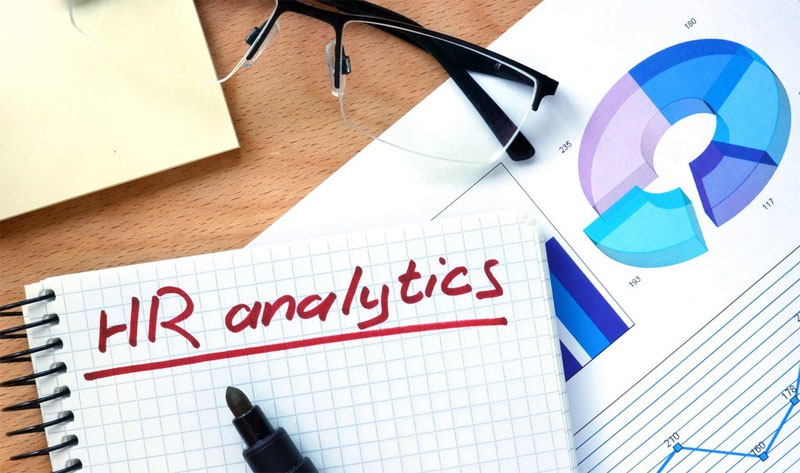By: Morten Kamp Andersen. Journal of Organizational Effectiveness; Bingley
This paper will explore the question: human capital analytics (HR analytics) – are we there yet? It will seek to clarify what is meant by “being there yet” and it will argue that the most positive proponents for this field are way too optimistic about the current state and what impact it will have on HR in the short to medium term but that the long-term outlook remain positive for the field.
- Where is the finishing line?
At a point in Lewis Carroll’s book Alice’s Adventures in Wonderland, Alice is lost and asks a cat which way to go. The story continues: “That depends a good deal on where you want to get to,” said the cat. “I don’t know where –” said Alice. “Then it doesn’t matter which way you go,” said the cat.
As with Alice, there has been much debate about where HR analytics is going. And without knowing where we are going and what to aim for, it is difficult to assess if we are there yet.
About five years ago, the first of many HR analytics conferences started to see the light of day and today it is near impossible to attend any respectable HR conference without analytics being the center of attention. The main message from these conferences is the same; HR analytics will transform and revolutionize not only what HR does but also the impact HR will have on organizations. HR analytics will bring HR to “the table” as is the common phrase. The finishing line is set quite ambitiously.
Looking outside of HR the view is quite different. When CXO’s are surveyed about their thinking about HR they all agree on three things: talent is on top of the agenda (although not as high as HR leaders tend to think), HR analytics is potentially value-added (although most leaders do not really know what they will get) and finally HR is if anything moving further away from “the table” than closer (due to the higher relative importance of technology). With them, the finishing line is more ambiguous and overall less ambitious.
Whichever of the two finishing lines is used it is fair to assess that we are not there yet. A few very large multinational companies have set up large HR analytics division and have embarked well on the journey. Many of their cases and results point to interesting and not least value-added findings. Some industries also appear to be further than others with banks and technology being particularly advanced especially in the USA and UK. Outside of the few large companies the situation is different. Here the challenge is to get out of the starting block. Indeed, outside the exclusive few, HR analytics is fairly immature. The next section will explore why.
- Multiple reasons behind the problems
There are multiple reasons why HR analytics by and large is still in its infancy, which is also why there is no quick fix. Before the reasons are explored in more detail, it is worth remembering that HR analytics is a young field and therefore by its nature is in its infancy. However, I believe that HR analytics are further behind what is reasonable to expect and where it should be. These reasons can be divided into four categories, which will be elaborated below.
2.1 Maturity
Maturity covers reasons, which will be solved over time but are necessary steps to improve the quality of HR analytics. Such reasons include lack of the implementation of good software solutions, bad data/lack of proper data, too few resources as well as lack of organizational wide buy-in.
All those issues are important but especially bad data is a big problem. Many studies have shown that bad data quality cost a lot for organizations. This is true in all parts of the organization but for some reason this is in particular true for HR Data.
There are four reasons behind why bad data happens:
Lack of a coherent data strategy. Having a purely operational approach to your data is probably the biggest reason behind bad data.
Assume that analytics software is the answer. HR analytics software is great, but it is simply just another data collection tool, albeit one with more potential than most. To get the most out of HR analytics you must go through a strategic data process and decide what data are of strategic importance to you and how they ideally look like.
Garbage in, garbage out. This one is often overlooked although it should be clear to everyone. Your data are only as good as the component inputs.
Lack of critical data sources. While the quality of the data is critical, what data sources you incorporate is equally important.
Many good HR analytics projects have failed from the beginning due to bad data as analysis – and decision making – based on bad data is meaningless.
2.2 Mindset
The mindset issue is really about a lack of strategic thinking, but not in the traditional way. It is recurring issue that HR must be more strategic. This has been highlighted in books, research and studies for more than 25 years. In relation to HR analytics this is, however, a twist.
HR analytics can deliver as many facts as it is even possible to conceive. HR analytics can also deliver a lot of interesting information – i.e. converting data and facts into information. But the most difficult thing – and the most value-added on any data journey – is to find and convert the right information into strategic actionable knowledge. And the only way you can generate this knowledge is to truly understand the business and strategy of the company, know what the primary workforce drivers are behind delivering on this strategy and finally understand how to get information and convert it into strategic actionable knowledge. This ability – or mindset – is not always present.
2.3 Organization
Many HR analytics functions have been moved around in HR departments in re-organization initiatives as organizations have tried to understand where HR analytics is best fitted within HR. There has even been a lively debate within the HR analytics community itself about whether the function should be located within our outside of HR.
The proponents for moving HR analytics outside of HR advocate that HR analytics will lose its strategic potential as HR in many organizations are more operational and tactical rather than strategically focused, HR does not have the right capabilities (data analytics skills) and will struggle to attract the right ones as talents with those capabilities look to work within BI functions, HR does not have ownership of all the relevant data as many reside in finance (payroll), IT, legal and sales and that efficiency gains in having one big analytics/BI function are greater than having people sitting in HR, marketing, finance and operations all doing the same thing.
The proponents for keeping HR analytics within HR say that nobody else care about HR data and insights (as much as HR do), it takes HR knowledge to interpret and convert HR data to knowledge and information, it may make HR more data driven and improve HR impact on business, data ownership sits naturally in HR and finally it will increase the likelihood of the analytics actually being used.
But even within HR the function has moved a lot within many organizations. In one particular case, the organization had HR analytics report to compensation, talent and engagement at various times within an 18-month period.
This debate is not complete and while it is good that organizations think hard about how best to utilize the skills and output of HR analytics, the downside is that it creates confusion, lack of permanent ownership and identity issues for the people involved.
2.4 Competencies
HR analytics is complex, and the range of competencies needed to do it well reflects this. They are unlikely to be found in one or two individuals, which is why the team must have a broad composition or be assembled on a project basis. I therefore propose that you assemble a team with a range of competencies. Specifically, I suggest six competencies (in random order):
Excellent statistics and numbers skills: good analytics requires excellent statistics and numbers skills. You can get far with simple regression-, factor- and t-test analysis skills but at other times, you will need skills in more advanced statistics.
Strong data management skills: you will quickly get stuck if your data are not clean, good and have a strong governance structure around it. Those and many other data management issues are essential for good analytics.
Captivating storyteller: analytics – even predictive – will only add value if a decision is made on the back of it. It sounds trivial, but data does not speak for itself and to move a decision making into a decision you must create a compelling story around it.
Visualization techniques – Ability to visualize your results: studies on cognitive load and other such issues show that if you give decision makers too much data, they will either not make any decision or make the wrong one.
Strong psychological skills: there are many reasons why strong psychological skills may be the most essential of all six. It is partly because you will deal with your data better if you truly understand terms such as bias and overconfidence. Partly because you will understand how to make more impact with your data but also, because your data have not meaning if you do not understand how to convert information to knowledge, which requires an understanding of psychology.
Understand the business: a final skill, which is most often not present as much as it should be, is the simple but powerful skill of understanding the business. This requires you to fully understand what the customer value proposition is is, what the strategy is, key differentiating factors, financial situation and more.
One of the reasons why HR analytics is not there yet and has been slow to progress has been the lack of varied competencies at hand. It requires a significant sized department to have many of all the above competencies. The answer is instead to build around them by building internal coalitions.
- Final thoughts
HR analytics is on a great journey and there is no doubt that the field is much further now than four years ago. The difference will be even more impressive in four years from now. HR analytics will, however, do itself a great service if the finishing line is not to “transform HR” or to “revolutionize the impact of HR,” but instead to “improve the quality of decisions around people in the organization.” While the latter may seem less ambitious it is in my view closer to what is going to be a reality. Instead of feeling like a failure it will set HR analytics up for success and will lead to potentially large shareholder value creation.



